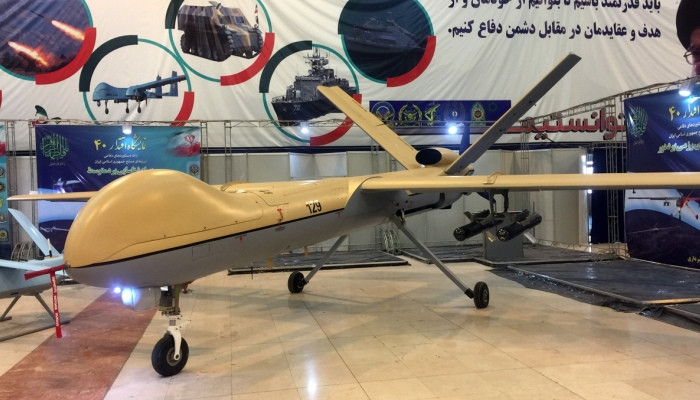Iranian Drone Sale To Russia Would Be Major Step To Becoming A Bona Fide Arms Exporter
 1727 Sunday, 24 July, 2022, 20:36 As the Oct. 18, 2020, expiration date of the U.N. arms embargo against Iran loomed, there was substantial speculation that Tehran would seek to modernize its aged military arsenal by importing Russian hardware. A Pentagon report released the year before reasonably speculated that Iran might seek Russian Su-30 fighter jets, S-400 air defense missile systems and T-90 main battle tanks. (The Guardian in April even claimed Iran was already supplying Russia with munitions and military equipment — such as RPGs, anti-tank missiles, and rocket launchers — from its militia proxies in Iraq and even donated one of its locally-built Bavar 373 air defense systems, Tehran's answer to the Russian S-300, to Moscow.) And Tehran would likely happily accept Russian rubles as payment. During Russian President Vladimir Putin's recent visit to Tehran, Iranian Supreme Leader Ali Khamenei said that countries should use their national currencies when trading to weaken the U.S. dollar. Furthermore, accepting Russian rubles would be beneficial for Tehran since, concurrent with the Iranian currency hitting record new lows, the ruble has wildly exceeded expectations by hitting a seven-year high in June, making it the world's best-performing major currency this year. Iran would also like an opportunity to compete on a big stage against Turkey's famed homegrown Bayraktar TB2 drone, which got yet another publicity boost through its successful use in combat by the Ukrainians. If Iranian-built drones in Russian service perform marginally as well, it could help boost sales. Distinguishing itself as an independent exporter rather than an importer of military hardware would undoubtedly be a point of pride for the incumbent regime in Tehran. Rather than upgrade its aged conventional forces, especially its antiquated air force, Iran stubbornly pushed ahead with developing indigenous armed drones and ballistic missiles instead as part of its strategy of developing its asymmetrical warfare capabilities. More generally, the relatively low price of Iranian weaponry makes it an affordable and desirable option for pariah states and unpopular regimes around the world. Potential offers of technology transfers — Iran inaugurated a factory to build its Ababil-2 drones in Tajikistan in mid-May — could also sweeten any potential deals. When Iran was an international pariah fighting Saddam Hussein's Iraq in the 1980s, it turned to North Korea for help developing and building ballistic missiles, which gradually led to it fielding the largest, as well as the most diverse, arsenal of such missiles in the entire region. Tehran might offer similar services to countries like Putin's Russia down the road, which would boost Tehran's domestic arms industry and provide it with a source of revenue as it chafes under debilitating U.S. economic sanctions. |

Farmers protest in Brussels over planned EU agriculture funding cuts (video)
68218.12.2025, 21:42
First lady Melania Trump's documentary movie trailer is out (video)
56318.12.2025, 17:12
22 Flights Cancelled, 250 Delayed Due To Delhi Smog
66018.12.2025, 13:12
OpenAI Launches New Image Generator GPT Image 1.5 (video)
84317.12.2025, 18:00
Delhi continues to choke as AQI remains ‘very poor’ (video)
86217.12.2025, 12:15
Elon Musk Makes History as the First Individual to Hit a $600 Billion Net Worth, Leaving Cubana Chiefpriest and 30BG Members Behind
124916.12.2025, 00:41
Velayati says ‘Trump plan’ for Caucasus mirrors Zangezur corridor
75515.12.2025, 22:56
Trump vows retaliation after three Americans killed in Syria attack
138414.12.2025, 19:47
